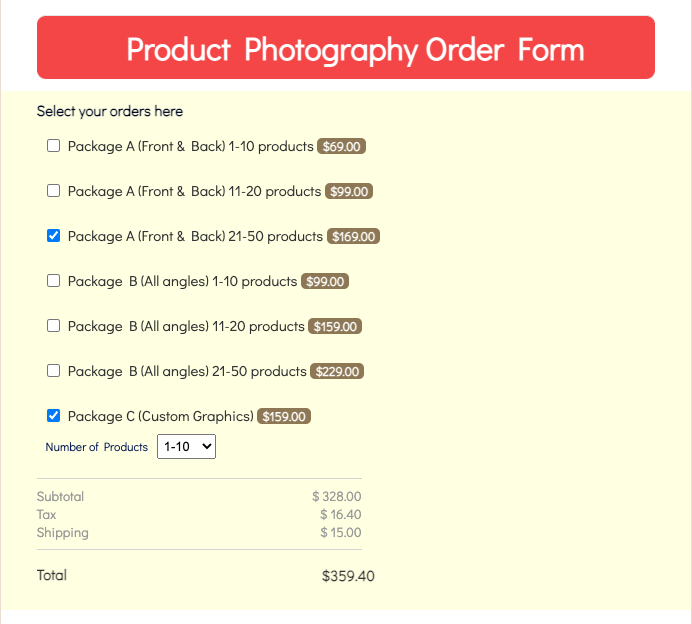As a photographer, you thrive on the art of capturing moments in a single frame. Do you feel like your creativity flourishes when a camera is in hand but have a hard time keeping up with the administrative requirements of running a business? Not only do you need to build systems for marketing and bookkeeping, but it’s also important to know how to price your photography.
How much should I charge for my photography?
Pricing is a complicated topic. The best approach is to keep it simple in the beginning. Evaluate your time as well as the market value of your services to decide on a good pricing structure.
Don’t get caught up in complicated math or confusing photography packages. When you’re just starting out, make sure you’re charging enough to cover your costs with a little left over. You can increase your rates as your business grows and your skills develop.
Consider using a cost-plus pricing calculation:
- Add the cost of materials, labor, and overhead to calculate the total cost.
- Using the total cost calculation, add your desired profit to determine the final sale price.
An easy way to calculate the profit margin is by determining a specific profit percentage. For example, increase the total cost calculation by 20 percent to build in a profit on every transaction.
Photography requires expensive equipment and material costs for printed images. You also accrue other costs for photo retouching software and the time you spend retouching the photos. It’s important to look at all the hidden costs that cut into your profit margins, such as taxes, hard drive storage, digital file transfers, and copyright ownership.
Check out the competition
Researching other local photographers can be a great way to get a feel for the current market. If you’re in a specialty niche, such as wedding or family photography, compare the pricing of other providers in your area.
When deciding how to price photography, remember that the cost of services varies depending on location. For example, a photographer in a big city will charge more than one in a small town.
Charge competitively, but don’t compete on price alone. Customers are willing to pay a premium if they can see the potential value in your services. In addition to deciding on your pricing structure, it’s also smart to build in your perceived value. Show why your quality and professionalism are worth the cost.
Define photography packages
Photography packages provide options to match the client’s preferred scope of work. Design a price list offering multiple price points. For example, here’s a breakdown showing how a wedding photographer might structure their photography packages.
- Bronze package. The basic wedding package includes 1.5 hours of ceremony coverage, 30 retouched images, and a copyright release with the digital files.
- Silver package. This wedding package includes two hours of ceremony coverage and portraits, 45 retouched images, and a copyright release with the digital files.
- Gold package. The next level wedding package includes up to four hours of pre-wedding, ceremony, and portrait coverage, plus 75 retouched images, and a copyright release with the digital files.
- Platinum package. This top-level wedding package includes up to eight hours of coverage, all retouched images, two photographers, and a copyright release with the digital files.
In addition to the package pricing, design a menu of add-on services for prints and additional hours.
Simple payment solutions for a photography business
Share with your clients a written payment policy that includes information about deposits, when the full payments are due, and refund details. These written guidelines increase the likelihood that you’ll collect payment in full on every gig. Most photographers require an initial deposit and payment of the remainder before the event.
Jotform makes it easy to collect payment online using payment forms. Add a payment page to your website where clients pay for their selected packages. Customize these payment forms to fit your needs, with options to collect customer information, preferred package details, and add-on services. You can choose from a variety of payment forms that integrate with your payment gateway of choice: PayPal, Square, Stripe, Authorize.Net, and more. If you don’t find a payment form to match your preferences, you can also design one. We’ve got several tutorials about integrating payments in your forms.










































Send Comment: